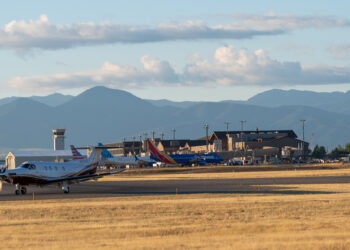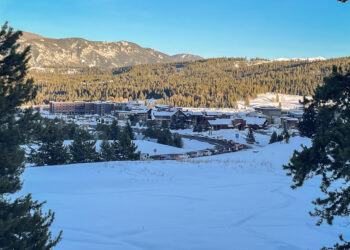MDT engages on highway 191, BSFD considers Spanish Peaks fire station, parties approve capital improvement plan and BSRAD discusses Big Sky Roadmap
By Jack Reaney ASSOCIATE EDITOR
Some large public costs and their longer-term benefits were discussed during the Madison-Gallatin Joint County Commission meeting on Oct. 4, with topics that included road improvements, fire safety, parks and trails and housing—and the possible funding strategies to chip away at the associated $777 million in recommended investments by 2033.
That $777 million was outlined in the Big Sky Community Capital Improvement Plan, a document approved at the joint county commission meeting by the Big Sky Resort Area District and Madison and Gallatin county commissioners.
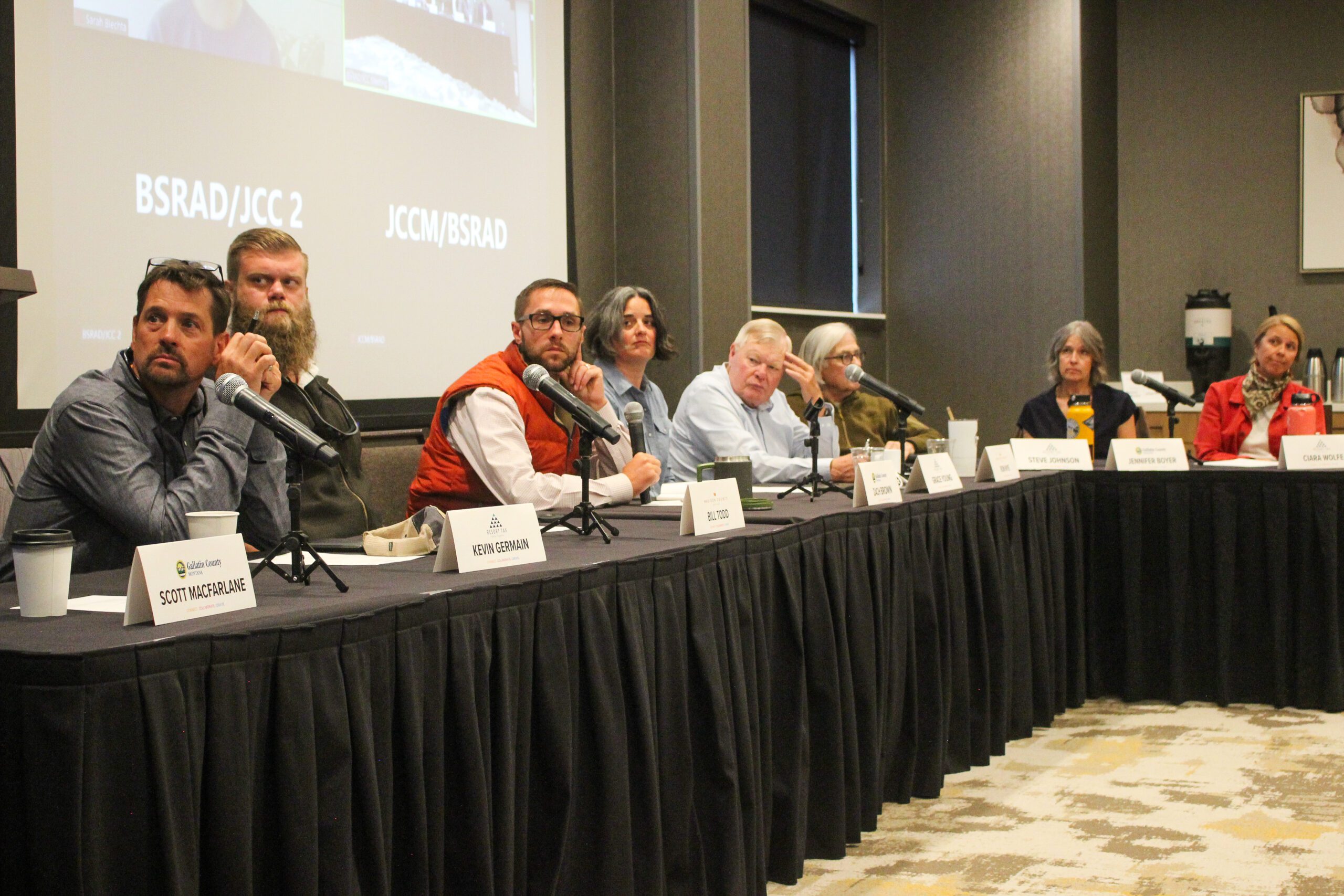
Colin McAweeney, the fiscal/economic analyst who presented the CIP to the BSRAD board on Sept. 13, repeated his presentation to the county commissioners. One significant change: the draft from September outlined $741 million in needs, but by October, that number had grown to $777 million—the recreation and conservation category increased by $35.6 million.
This CIP is the first compiled for Big Sky since 2011, and was expanded to include Big Sky’s entire service area. McAweeney summarized the types of ten-year needs outlined in the CIP as one-time costs associated with currents needs and expected growth, such as parks, fire stations and utilities, but not ongoing operational costs.
He later added, “This doesn’t represent BSRAD, or the county, or really the community’s commitment to these dollars… But rather it is a guiding document.”
BSRAD ‘broadcasting moves’ on Big Sky Roadmap
BSRAD Executive Director Daniel Bierschwale spoke about the Big Sky Roadmap, a plan published in May to improve infrastructure investment, funding and voter representation in Big Sky.
Because that plan includes realignment of school, library and hospital district boundaries—Big Sky’s Madison County residents pay taxes supporting those respective districts in Ennis—Bierschwale emphasized that BSRAD wants to align with the needs of both counties, while also looking out for Big Sky’s recommended $777 million infrastructure investment.

As more resort tax revenue is used to fund infrastructure investments, Bierschwale added that it will be critical for BSRAD to continue funding its local nonprofit partners.
“I just want to fully broadcast what our moves are, here as a community, and how we’re looking at attempting some pretty challenging investment hurdles,” he told the commissioners.
He explained that there’s a long history of Madison County’s special purpose districts taxing Big Sky residents for inaccessible services.
“The [Big Sky] community is taking action, we are broadcasting our moves, taking action to begin to realign those taxing districts. Hospital district being one, school district being another, library district being a third.”
Bierschwale reiterated that the topics outlined in the Big Sky Roadmap are “extremely complicated,” and that BSRAD wishes to collaborate with both counties to find mutually beneficial solutions.
If easier measures don’t work, Bierschwale said county boundary realignment would be considered—a topic described in the Roadmap. Gallatin County commissioner Zach Brown expressed surprise, but Bierschwale said county realignment is only a possibility, not a current focus.
Context-sensitive approach to 191: ‘something different than what MDT has ever done’
Dave Gates, district preconstruction engineer with Montana Department of Transportation, explained an unprecedented “optimization plan” for U.S. Highway 191 between Four Corners and Big Sky.
“I think the big focus that I want you to know is MDT completed a corridor study in 2020, on 191,” Gates told the joint county commission. “And the needs in the corridor study far outpaced what funding we have available to address those needs in a reasonable planning horizon.
“So we’ve embarked on this optimization plan as something different than what MDT has ever done, to help us identify project priorities and establish relationships between local agencies and other stakeholders that we can collaborate together with,” Gates said.
Tim Erickson, a transportation engineer with HDR—the engineering firm contracted by MDT—said the optimization plan is intended to clarify which projects, in which order, will make the most impact on U.S. Highway 191 and Montana Highway 64.
“We’re really jumping into [the first phase] of the project,” Erickson said. “That’s all about the focus on collaboration and identifying what those needs are, from various stakeholders.”
Current priorities include Gallatin Gateway, the curved bridge beside the Lava Lake trailhead, and the intersection of 191 and 64 in Big Sky.
Gates added, “MDT leadership has visited with stakeholders up here in Big Sky over the summer on numerous occasions. I just want to emphasize that we have support from leadership at Montana Department of Transportation to help partner and come up with solutions, and we certainly appreciate that partnership.”
HDR representative Spencer Dodge explained that the optimization plan will employ a “context-sensitive solution process” to collect feedback and address community interests.
“Really making sure that the folks that do know this corridor best are kind of putting their heads together and saying, this is a priority for us, so we want to go about it that way,” Dodge said.
Gates said awareness of local needs will be important.
“It seems like any time we do anything on 191, whether that’s fix a piece of guardrail, or there’s an accident that needs to be cleared, it translates into significant delay issues up and down. That is one of the primary focuses of what this effort is—develop the stakeholder relationships and partnerships so we can communicate with each other about schedules and anticipated impacts, with the hope of being able to work around them,” Gates said.
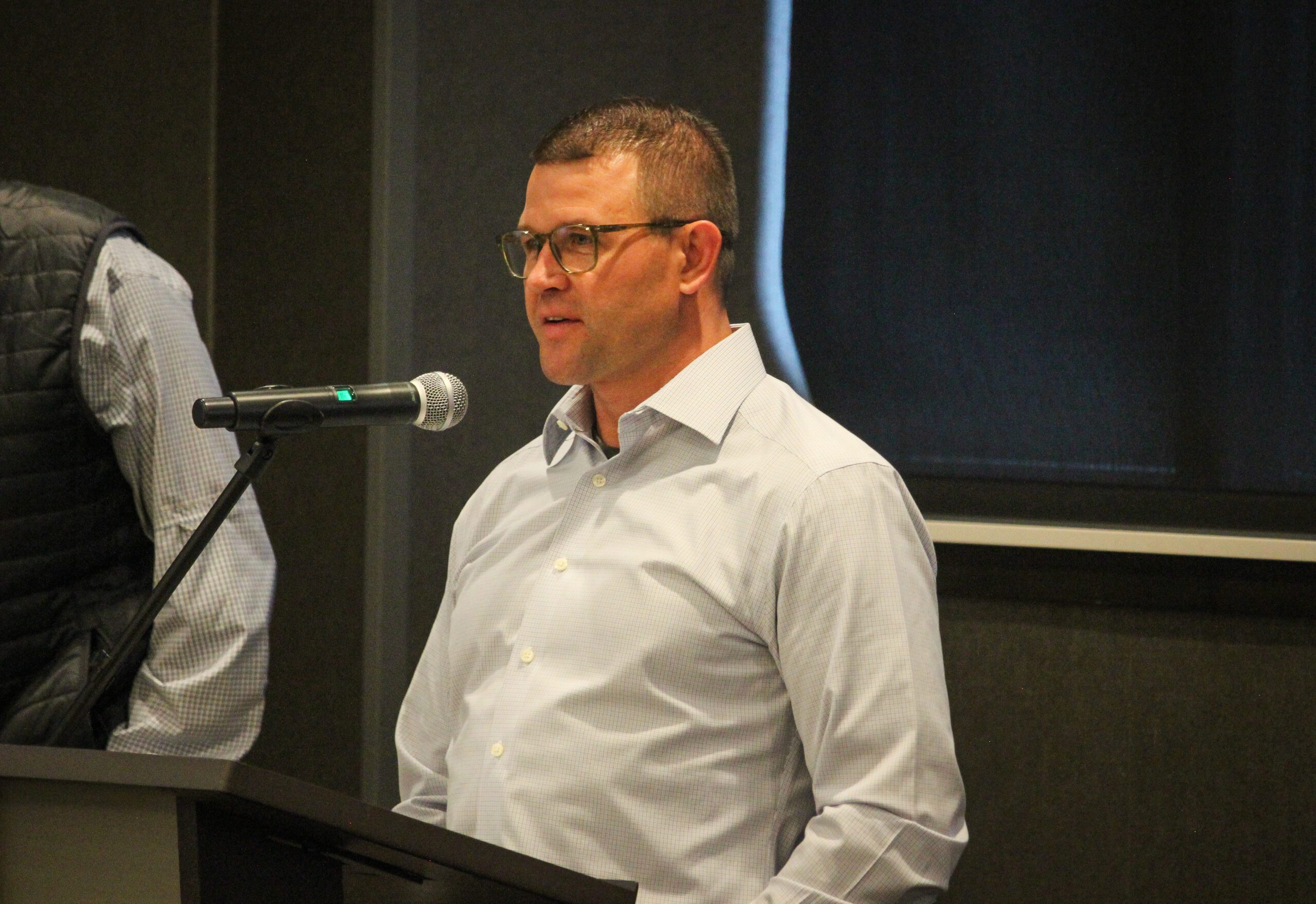
One local business owner asked about the possibility of construction being done at night, and Gates said that’s a consideration.
One Gallatin Gateway community member’s public comment criticized MDT for being reactive rather than proactive with regards to the state’s 191 corridor study, as she interpreted the findings: “there’s too much traffic on this stretch of highway, it’s too dangerous, speeds are too fast, and that the local residents strongly oppose any further development between the canyon and Gallatin Gateway… Anybody could have seen this coming.”
She added, “12 to 18 months is just too far away for many of the problems that we already have. What is your plan for action?”
Gates responded by reiterating that MDT’s statewide needs outpace this project several times to one and the key challenge is to leverage funding opportunities.
He added, “I want to be clear that our goals for improvements on 191 are not specifically to add additional [traffic] capacity, as much as it is to find opportunities to improve safety or mobility. And I know a lot of folks hate to hear this, but I have to say it: building a good road takes time. And there’s a lot of collaboration and challenges associated with… [developing] the right project at the right time.”
To execute the right project, Gates said the optimization study intends to unify stakeholders, one being the Center for Large Landscape Conservation, which recently released a report on wildlife habitat connectivity and the same section of highway 191.
MDT and HDR will provide further public engagement opportunities in the coming months.
BSFD considers third fire station in Spanish Peaks area
With Big Sky’s wildfire risk, long response times and high homeowners’ insurance rates pose a growing challenge.
Dustin Tetrault, deputy fire chief for the Big Sky Fire Department, presented on a potential fire station in the general area of the Spanish Peaks Mountain Club. Tetrault explained that based on current standards, a third station would improve access to homeowners’ insurance for homes in that area. The station would be public and run by the Big Sky Fire Department.
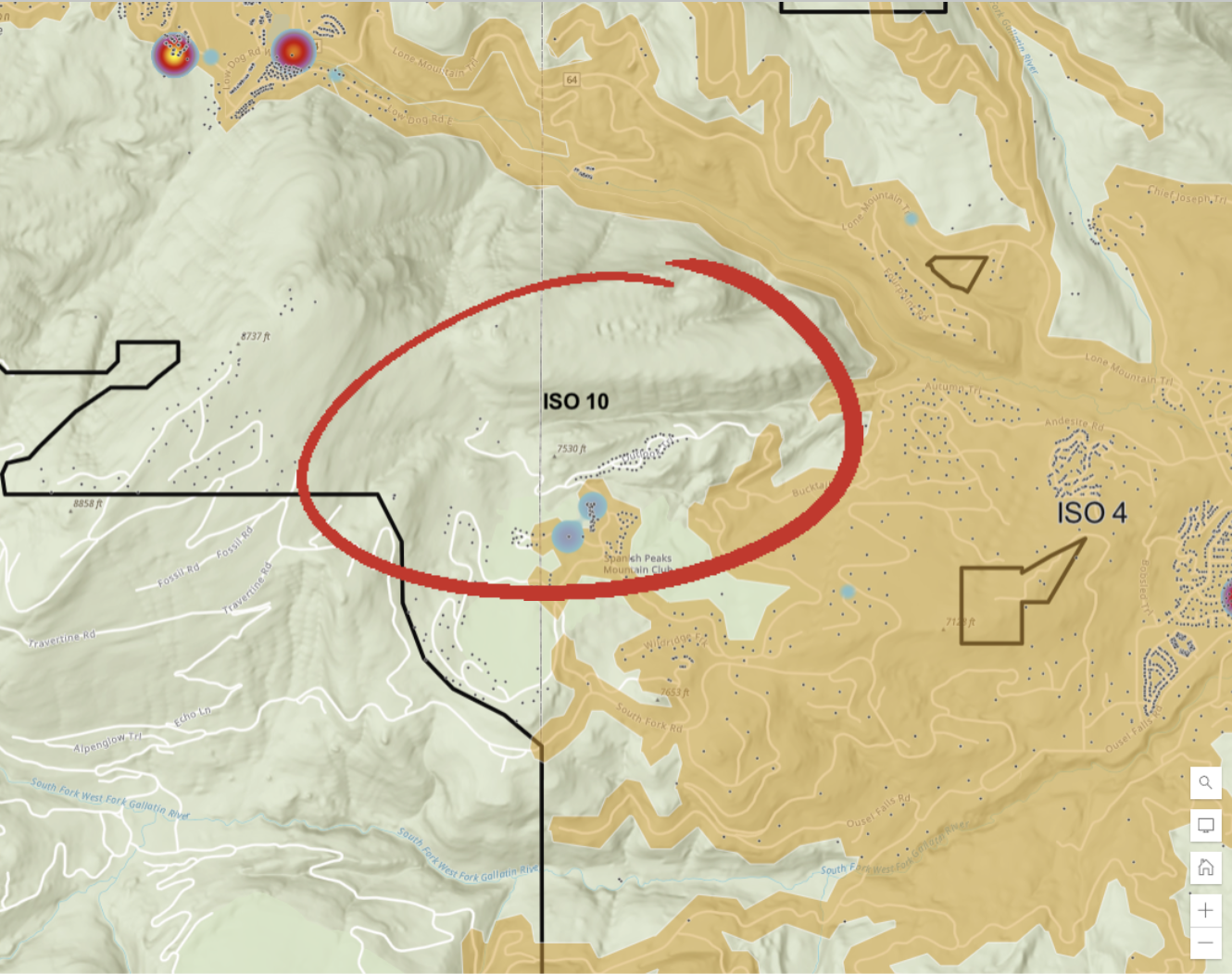
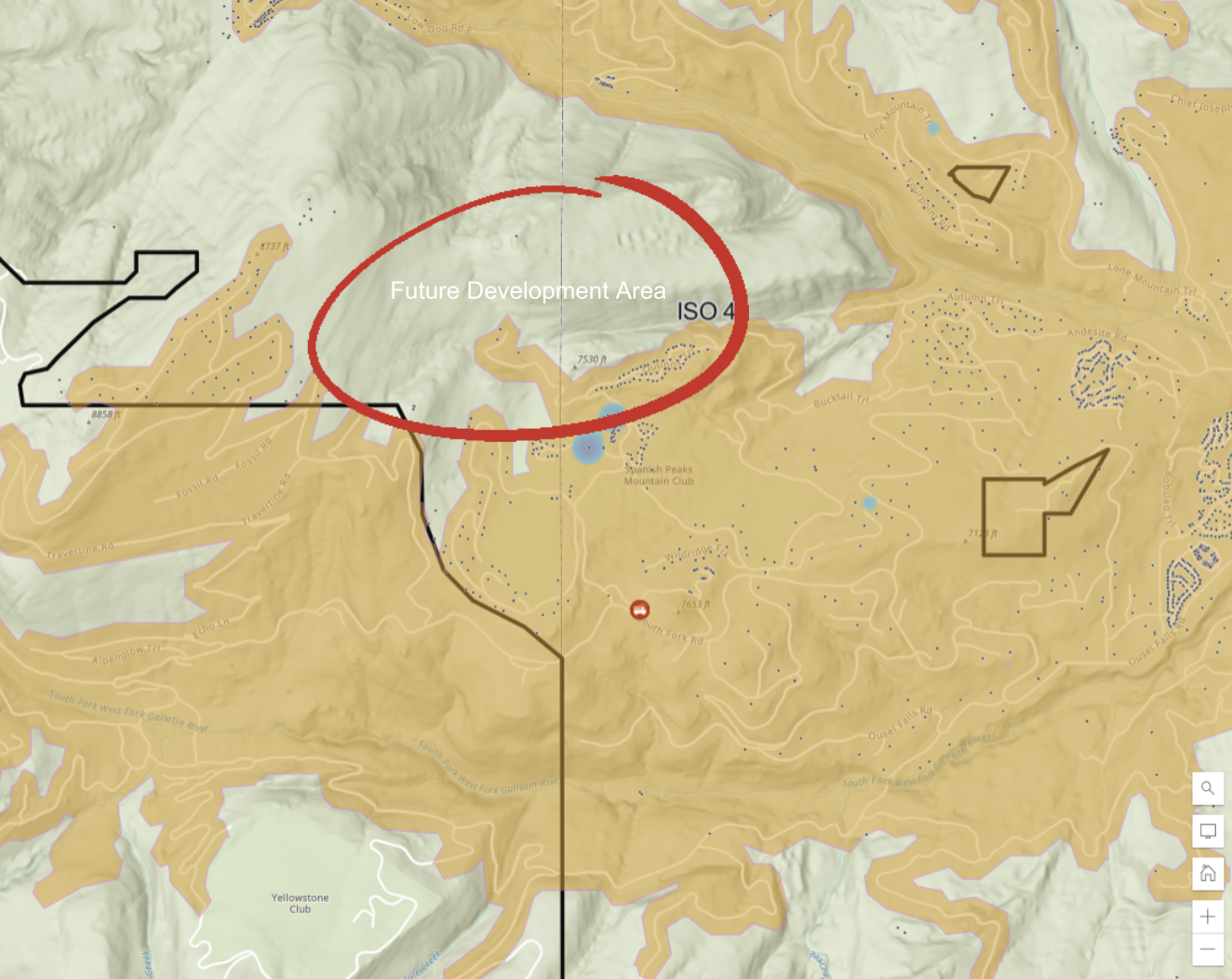
Big Sky’s non-shaded territory is rated “ISO 10,” representing the highest risk for insurers.
BSFD evaluated the current coverage area (left) and potential coverage area (right).
COURTESY OF BIG SKY FIRE DEPARTMENT
Tetrault said a Spanish Peaks fire station has been in discussion since 2017. In 2020, BSFD agreed on a public-private funding partnership with Lone Mountain Land Company, he said.
The current cost estimate is about $14 million. Tetrault said it could be funded by a rural improvement district, which would localize the tax burden to property owners in a specified area near the potential station.
“This is the very first [RID] that’s ever been done in the state of Montana for a fire station,” Tetrault said.
“But it is very clear that it is allowable,” he added.
Despite the millions of dollars in infrastructure cost, Tetrault said the insurance savings could outweigh the increase in taxes resulting in average savings of 76%.
“So this is one that we feel really strongly about,” Tetrault said. “We’re making the right decision, we’ve done our research. And the numbers really don’t lie on this.”
Commissioner Brown voiced a concern: what if insurance companies eventually decide the new fire station isn’t enough?
Brown suggested that the fire department “make sure that there’s an understanding that in that scenario, property owners would still be on the hook to repay bonds and wouldn’t necessarily be utilizing any cost saving scenario we’re talking about. I think the writing’s on the wall for the direction this is going nationally… It’s not guaranteed to provide the windfall insurance premium savings that are anticipated in your assumption.”
Tetrault said the fire station is having similar conversations every day with developers and community members.
“This is an issue, and it’s not—we don’t have a 100% answer for it,” Tetrault said.
Big Sky adds 4.6% of state GDP
BSRAD and the Big Sky Chamber of Commerce commissioned a study on Big Sky’s economic impact. Jackie Haines, executive director of the Northern Rocky Mountain Economic Development District, presented an overview of the study, which should be completed before local chairlifts spin.
One key finding: Big Sky is responsible for about 4.6% of economic activity in Montana.
The analysis shows that Big Sky has 810 registered businesses employing 15,748 workers, with 7,408 working within BSRAD and 4,322 on a seasonal basis. Census data estimates that 74% of Big Sky’s workforce does not live in the resort area district and showed that Big Sky’s population grew 176% between 2010 and 2020—current census data does not include growth during COVID.
Haines urged Big Sky residents to continue filling out community surveys, as “data specific to your community is challenging due to your unincorporated status,” she said.
Based on economic data available through resort tax collections and chamber of commerce metrics, Haines reported the total impact of two largest categories: private construction and visitor spending.
The impact of private construction totals roughly $1.2 billion. “So it’s really large the economic impact that construction has on this community,” Haines said. She suggested that investing in infrastructure will help the community sustain itself when private construction eventually tapers off.
Visitor spending within BSRAD accounts for about $705 million.
Big Sky’s total GDP is estimated at $2.2 billion, with about $1.2 billion of that staying locally and impacting 26,000 jobs, Haines said.
Montana’s statewide GDP is about $49 billion, meaning that Big Sky accounts for about 4.6% of economic activity in the state, Haines said.









